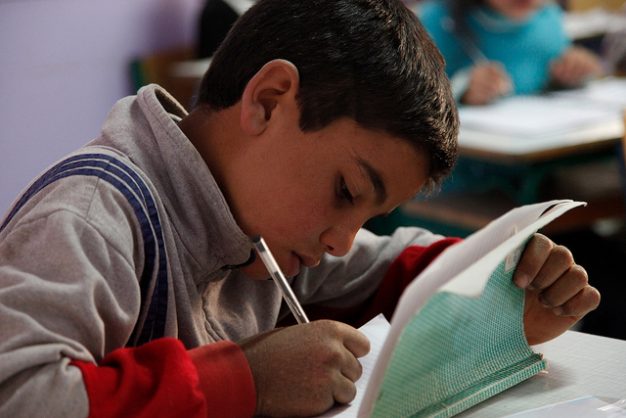
Steps toward psychological well-being: A case of refugee children
The number of children and adolescents that flee to Europe and other areas deemed financially well-off face many challenges, even after reaching their supposed safe havens. Some of these are to do with the complex legal procedures to gain refugee status; others are to do with social, cultural and linguistic differences. A recent article in The Lancet, explored the difficulties experienced by refugee children and adolescents who have had their education terminated and are now having to adapt and achieve in a new school system.
School environment
The new school environment is not often as welcoming as one might hope or assume, as the newly settled refugee children and adolescents are vulnerable to discrimination and bullying. A Swedish study found that personal and social factors in such an environment can have serious implications for the mental health of children and adolescents (Almqvist, K. & Broberg, A.G., 1999). These often include poor societal adjustment and the development of a low sense of self-worth.
Parents and family
In such cases, the family environment can mitigate negative stresses and facilitate good levels of psychological well-being of children and adolescents after displacement. Homes where family cohesion and strong parental support is present were associated with less psychological distress among children and adolescents than family environments where the opposite was present.
A family, therefore, that has close relationships, good parent-child communication, and which provides support and nurturance for their children is thought to diminish the experience of psychological distress. However, in a Croatian study, maternal figures that experienced difficulties in adapting to new environments after displacement had children who also experienced heightened psychological distress.
How can we get involved?
The process of displacement can be difficult on its own, and having to deal with the challenges of a new environment, with new rules and cultures can make adjustment difficult. For refugee children and adolescents, this has a larger implication for their health and well-being. But how can we get involved in minimising these difficulties?
Firstly, a study reported that when refugee children and adolescents experienced low levels of violence and discrimination from their peers and, it had a less negative effect on their self-esteem (Sujoldzic, A., Peternel, L., Kulenovic, T. & Terzic, R., 2006). In addition, when their peers were experienced as being supportive of their daily challenges (something most of us take for granted) it was associated with an improvement in their psychological functioning.
Therefore as mental health care workers, children’s rights activists and organisations, we too can alleviate the frequency with which refugee children and adolescents experience psychological distress by focusing our interventions on a number of levels.
Interventions should not only be focused on the child or adolescent affected, but on a parental, school and community level. Interventions should also be on a societal level because, as a society, we need to act in promoting the psychological health and well-being of all children regardless of their origin or creed.
Author: Eugene Davids
Photo Credit: Photo by Russell Watkins/Department for International Development https://www.flickr.com/photos/dfid/15556570453/
Reference:
Almqvist, K. & Broberg, A.G. (1999). Mental health and social adjustment in young refugee children 3 1/2 years after their arrival in Sweden. J Am Acad Child Psychiatry, 38, 723-730.
Sujoldzic, A., Peternel, L., Kulenovic, T. & Terzic, R. (2006). Social determinants of health – a comparative study of Bosnian adolescents in different cultural context. Coll Antropol, 30, 703-711.
A number of the references made use of in this piece come from: Fazel, M., Reed, R.V., Panter-Brick, C. & Stein, A. (2012). Mental health of displaced and refugee children resettled in high-income countries: Risk and protective factors. The Lancet, 379, 266-282.




